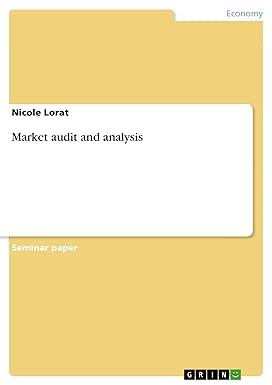Question
Angies company has recently told her that her pension money can now be invested in several different funds. They have informed all of their employees
Angies company has recently told her that her pension money can now be invested in several different funds. They have informed all of their employees that it is the employees decision which of the six risk categories to invest in. The six risk categories include conservative, secure, moderate, balanced, ambitious, and aggressive. Within each risk category there are two fund choices. This gives each employee twelve funds in which to invest capital. As the names suggest, each fund category attempts to invest the persons capital in a particular style. A conservative fund will find investments that will not expose the investors money to risk. This category is the safest. Money invested here is not exposed to great potential losses but it is not exposed to great gains either. The aggressive fund is for investors who believe that when nothing is ventured, nothing is gained. It takes the greatest risks. With this fund, investors have the potential to make great gains with their capital. Of course, this is also the fund that exposes the investor to the potential for great losses. In between, the other four categories mix the amount of risk an investor is subject to. Angie is rather at a loss. In the packet from the investment company she has received over 150 pages of information about each of the accounts. For the past three nights, she has been trying to read it all. Now all of the information is running together in her head, and she has to make up her mind soon. Just as she is about to give up and throw a dart at the dart-board, she discovers an investment performance update (Table 1) among the many pages of data. Remembering her statistical training, she decides to study the performance of the different funds over the past 11 years. To fully understand the values she calculates, she decides to compare those values with the market performance of three market indicators: Treasury Bills, the Capital Market Index, and the Standard & Poors 500 Index. Investors use these indicators to compare the performance of their investments against the market.
As her next step, Angie is going to interpret the results of her calculations. To make sure that she has a comfortable retirement, she has decided that she would like to have her money grow at an average of 15 percent of great each year.
Angie has narrowed her list to those funds averaging a 15 percent or greater return on investment per year. That still leaves her with several to choose from. Remembering that some of the funds are riskier than the others, Angie is quick to realize that in some years she may not make 15 percent or more. She may add 25 percent or higher to her total amount of pension, or she may lose 5 percent of her pension. An average value doesnt guarantee that she will make exactly 15 percent a year. An average reflects how well she will don when of the good years (gains) and bad years (losses) are combined. Angie has 20 years to work before she retires. While this gives her some time to increase her wealth, she is concerned that a few bad years could significantly lower the amount of money that she will retire with. To find the funds that have high gains or high losses, she turns her attention to the study of the range and standard deviation.
For all of the funds that she is interested in, Angie has notices that the spread of the data differs dramatically. One of the range is almost 60 points! She has also noticed that the riskier the fund, the greater the range of values. Since the ranges may have been caused by an isolated year that was particularly good or particularly bad, Angie turn her attention to the standard deviations, which also increase as the riskiness of the fund increases. Decision time! Comparing the average return on investment yielded by the stock market (Standard & Poors 500, Capital Markets Index) during this 11-year period, Angie notices that several of the investment funds have brought in returns that were less than the Standard & Poors 500 market indicators. She decides to take them off her potential fund list. This removes M2 and B1 from consideration. She also removes from consideration any fund that has a large range and standard deviation. Because she is willing to take some risk, but not a dramatic one, she decides not to invest in the aggressive fund. This removes G1 and G2 from consideration. Now she can concentrate on a smaller group of funds: M1, A1, A2. So now, instead of having to devour hundreds of pages of information, Angie can look at the pages detailing of the performance of these three funds and make her decision about which one to invest in. To help make the choice between these funds, Angie has decided to use the Z tables to calculate the percentage of time that each funds return on investment fell below 12 percent that she feels that she absolutely has to make each year.
Assignment How Angie should conclude her analysis? What are appropriate justifications for her decision?
can you help me answer the question above?
thank you
Step by Step Solution
There are 3 Steps involved in it
Step: 1

Get Instant Access to Expert-Tailored Solutions
See step-by-step solutions with expert insights and AI powered tools for academic success
Step: 2

Step: 3

Ace Your Homework with AI
Get the answers you need in no time with our AI-driven, step-by-step assistance
Get Started


